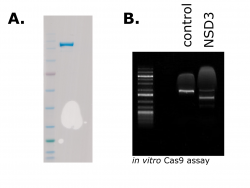Follow up to finding an antibody to detect EZH1 protein expression…the search continues
Following up on my previous post, I tested two antibodies I was planning on trying from Abcam and Novus that were used in previous publications. This time I tested directly in patient sample lysates and either saw no band, or many nonspecific bands (Figure 1). I have since reached out to the Orlando lab who Read More …

